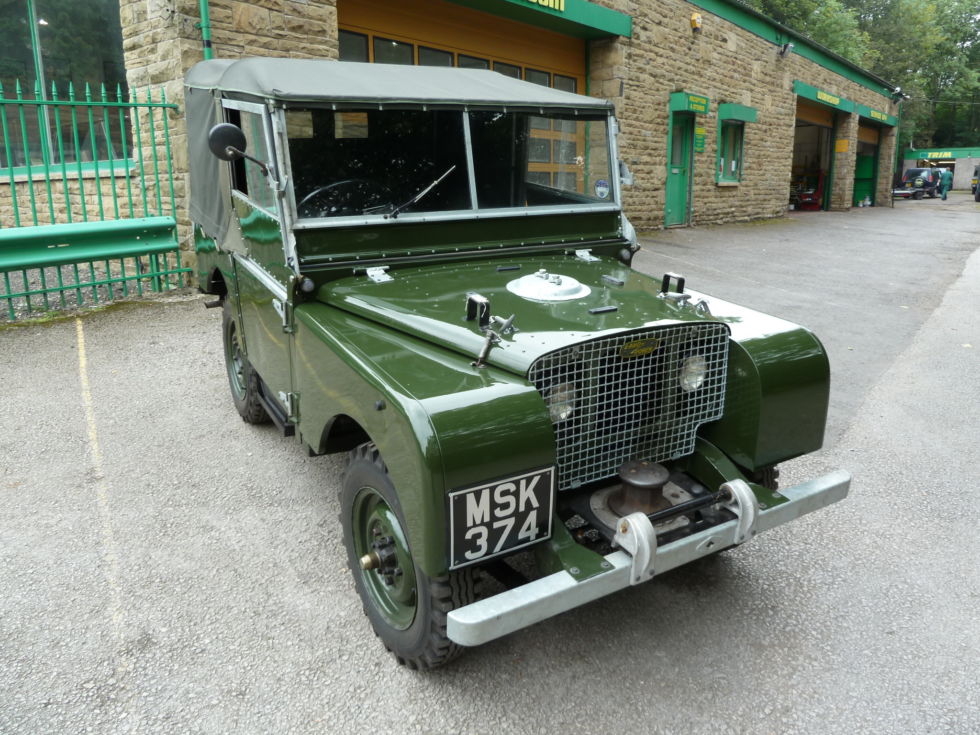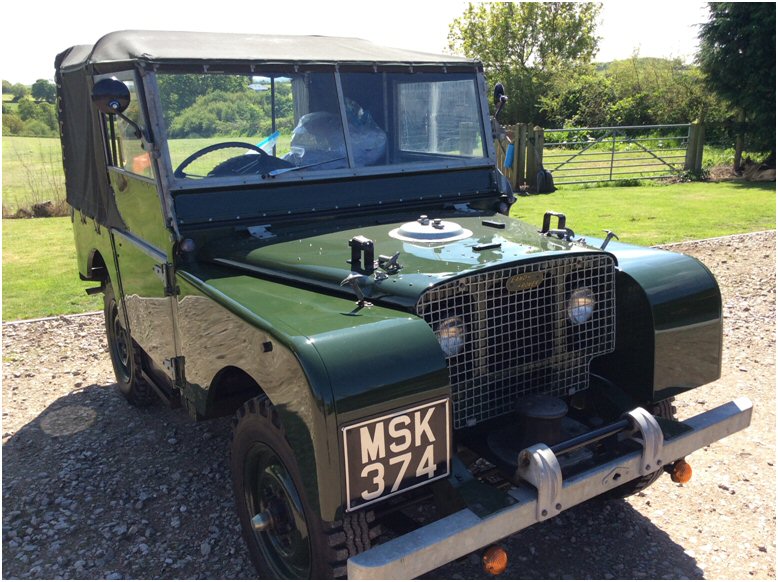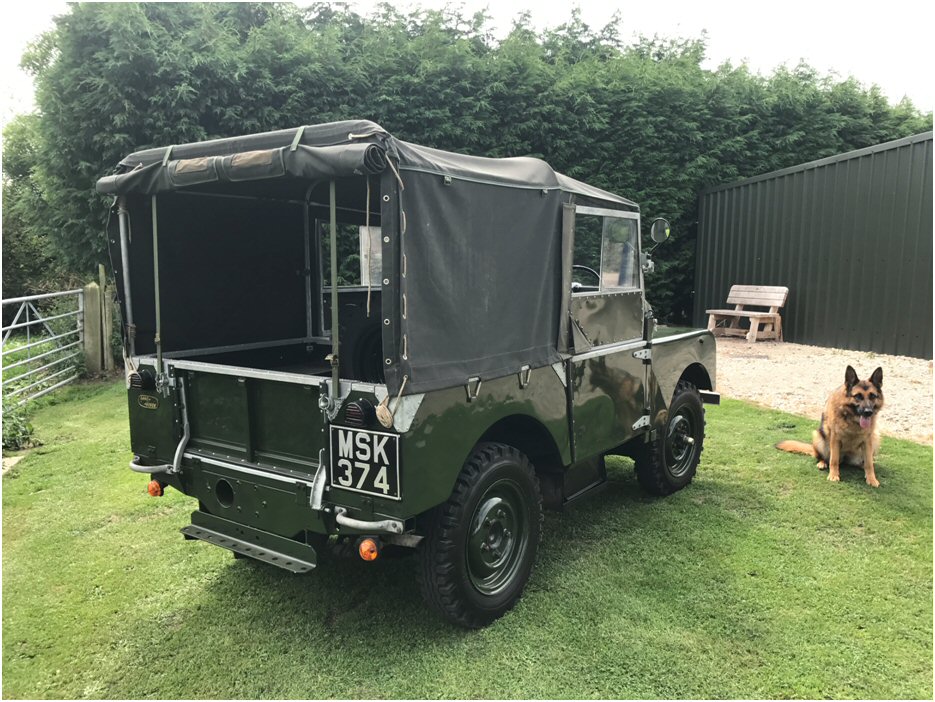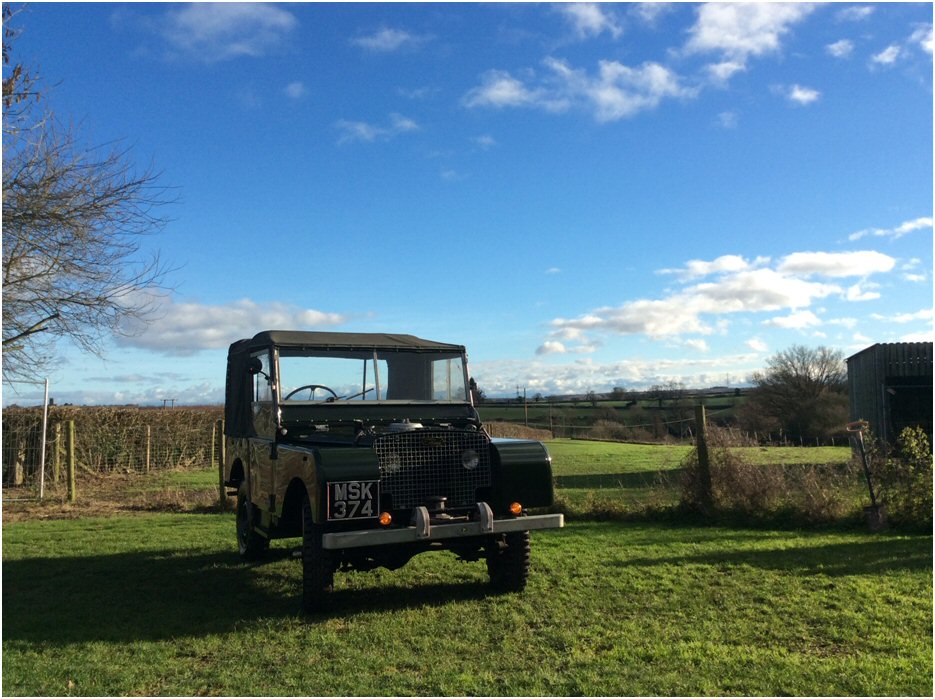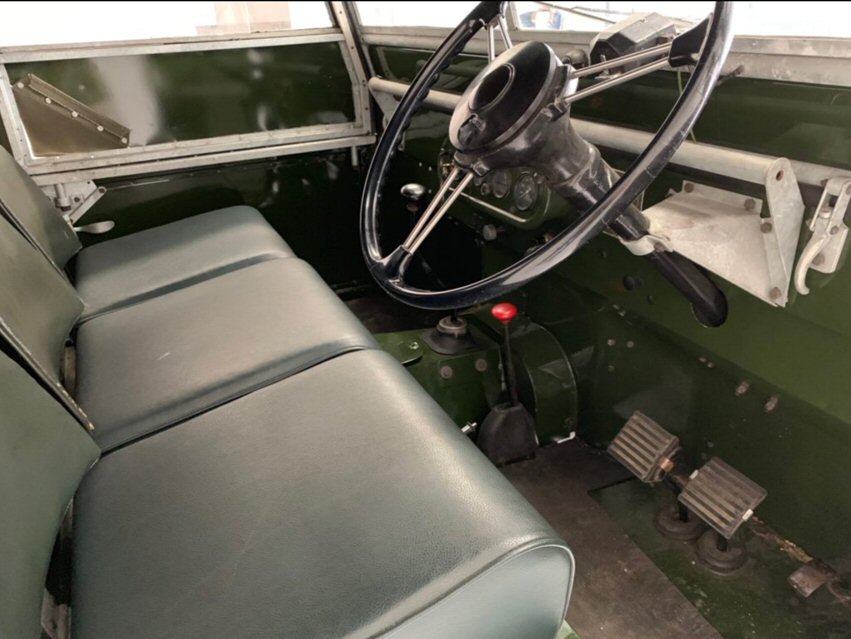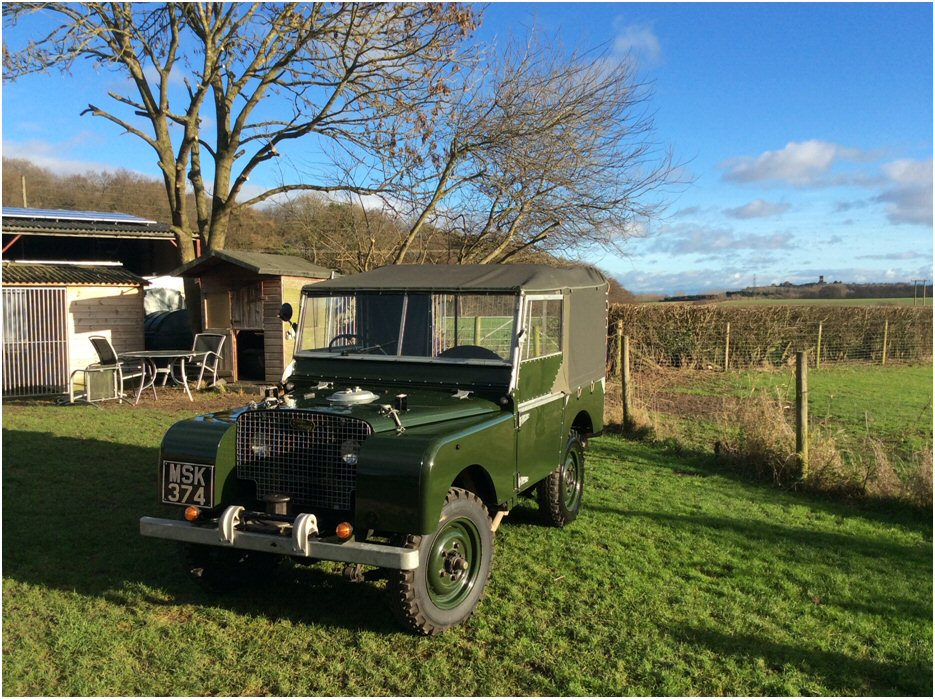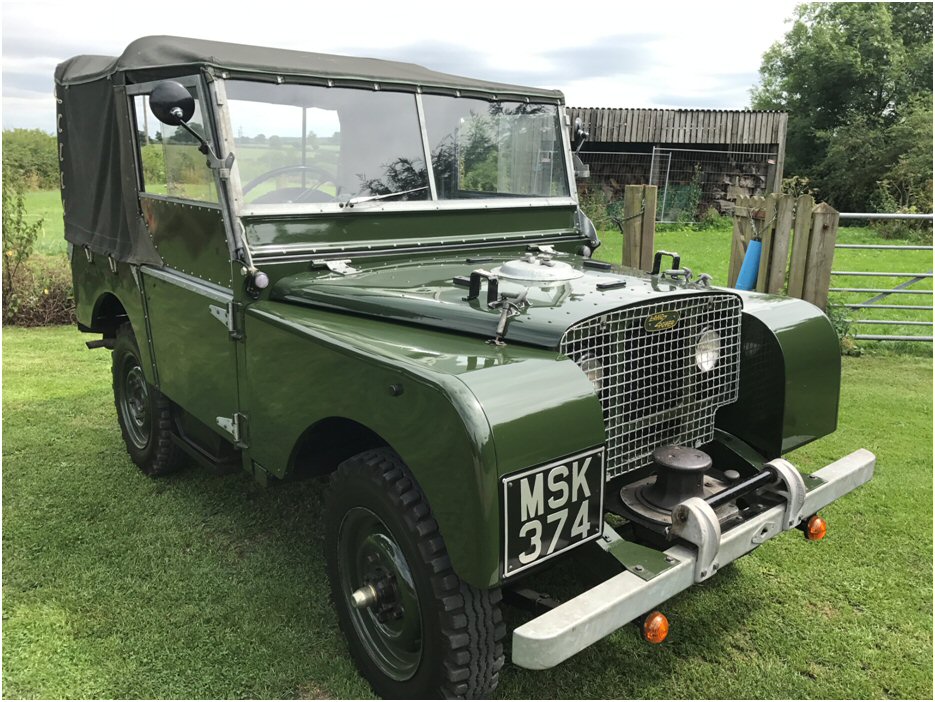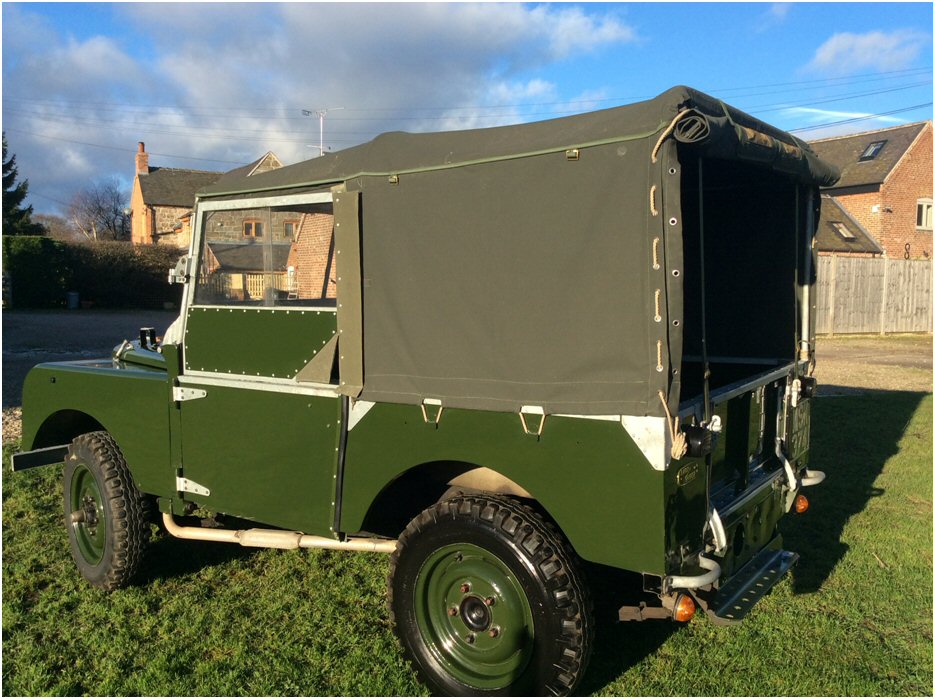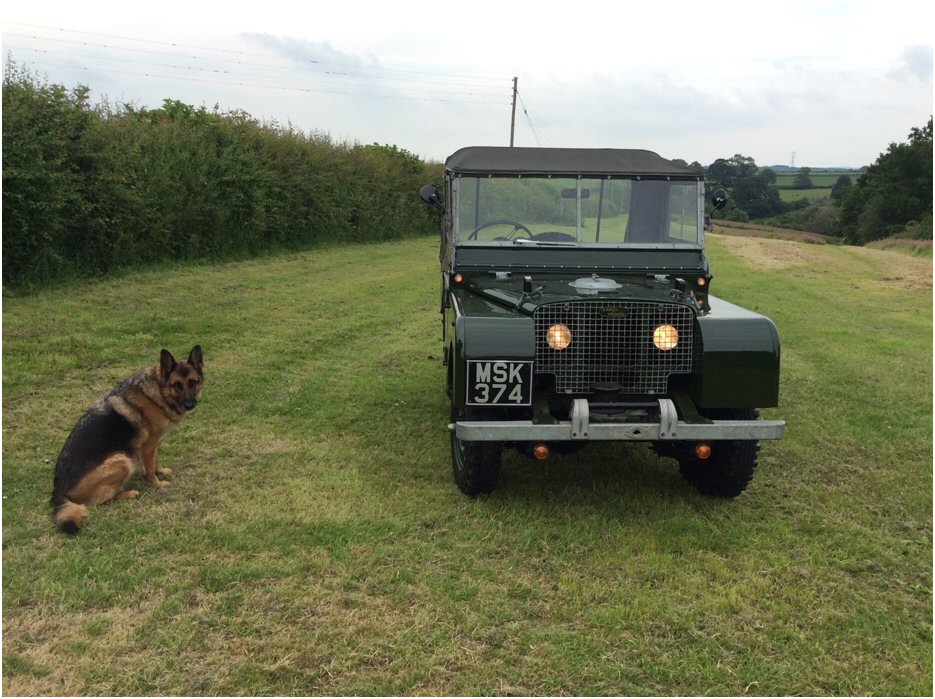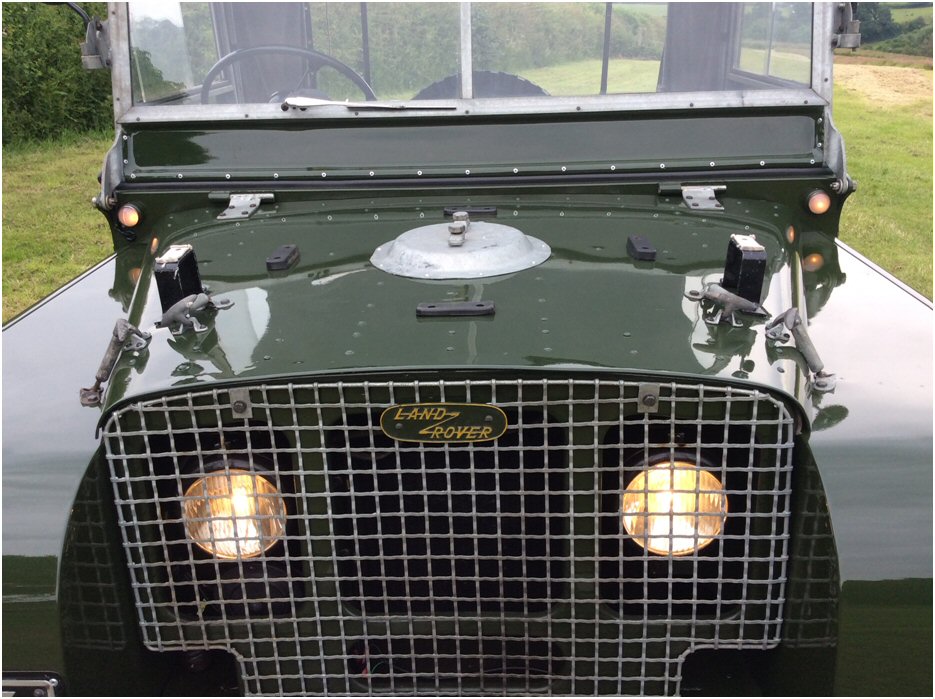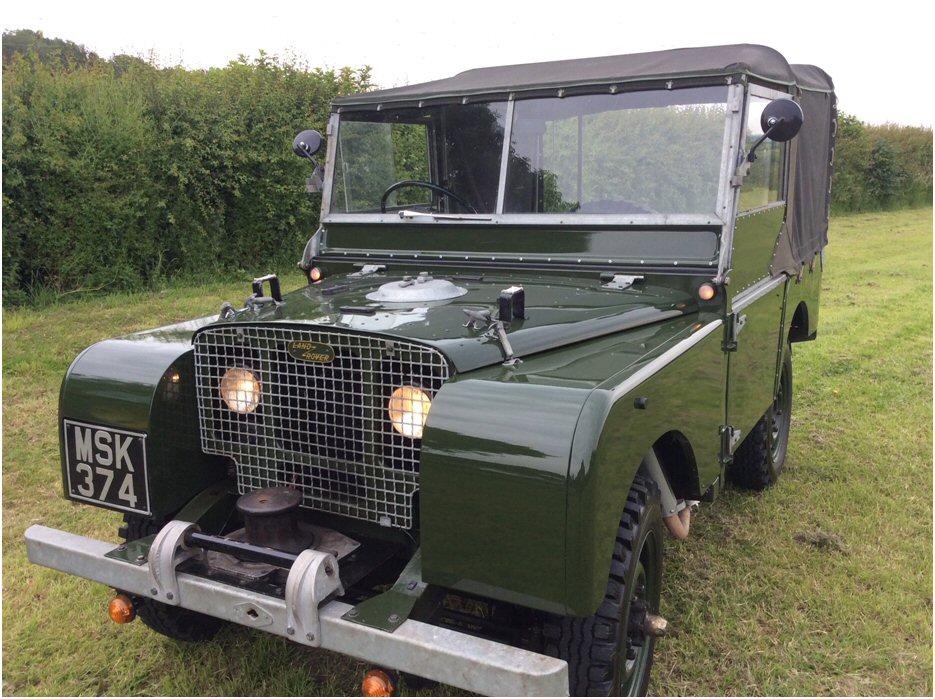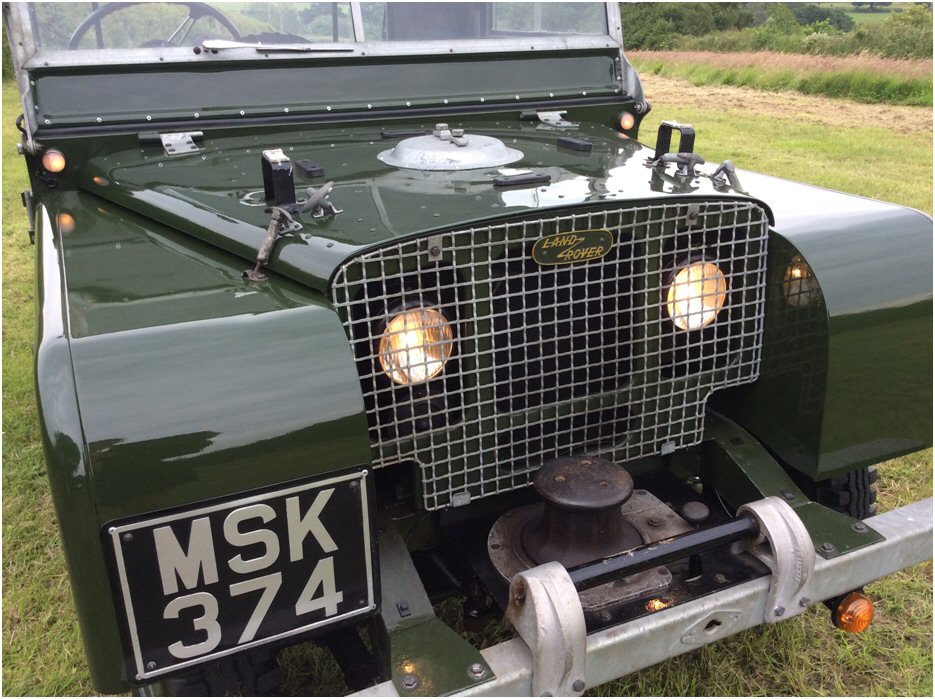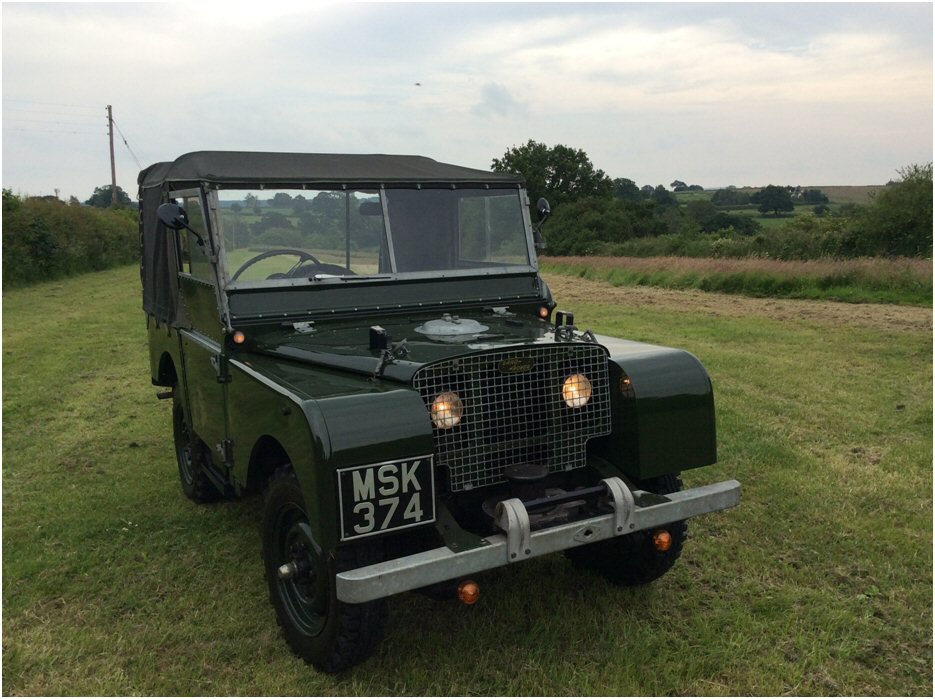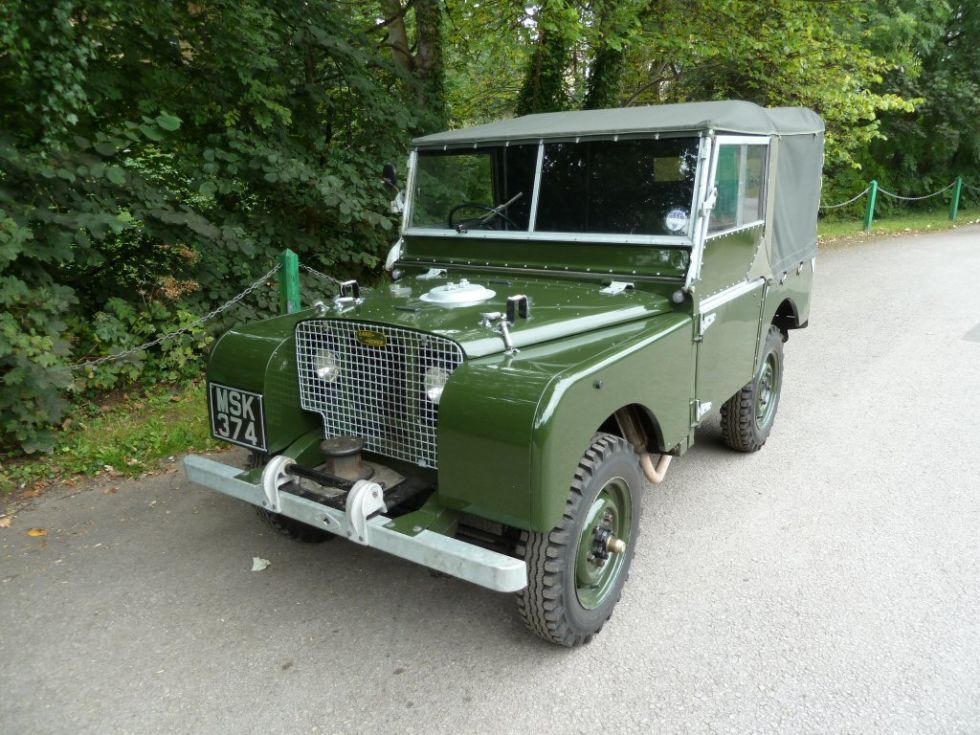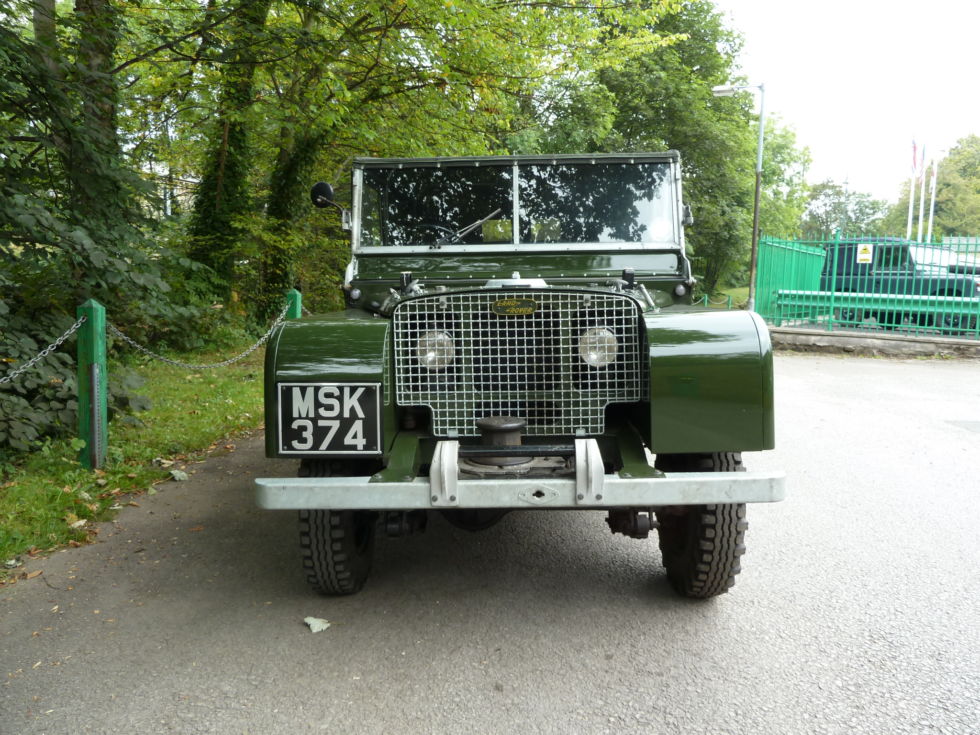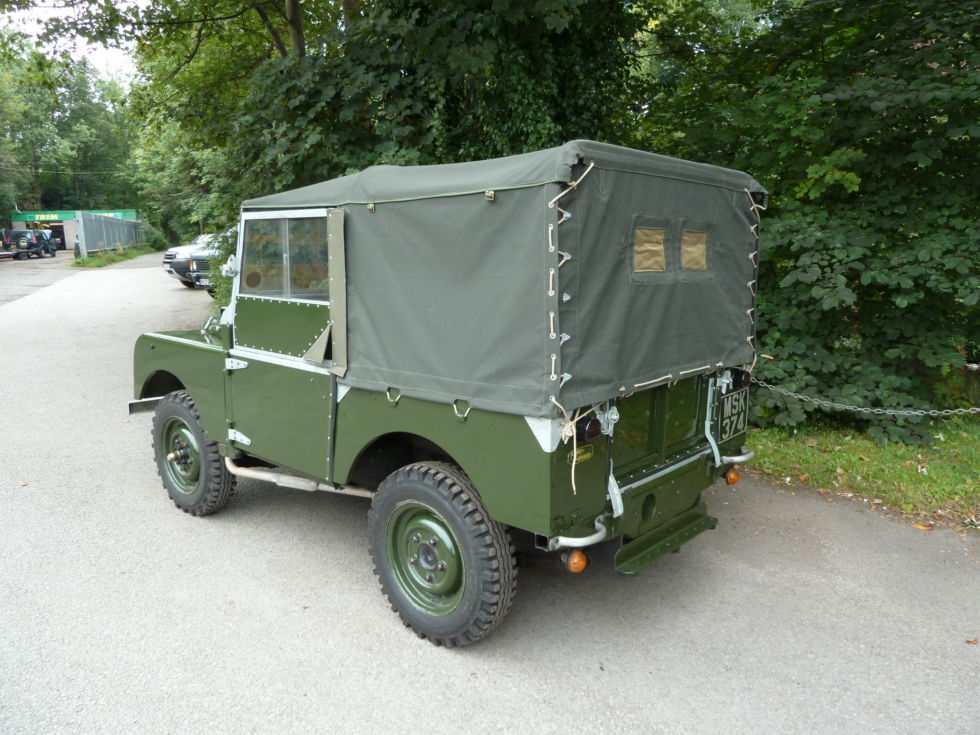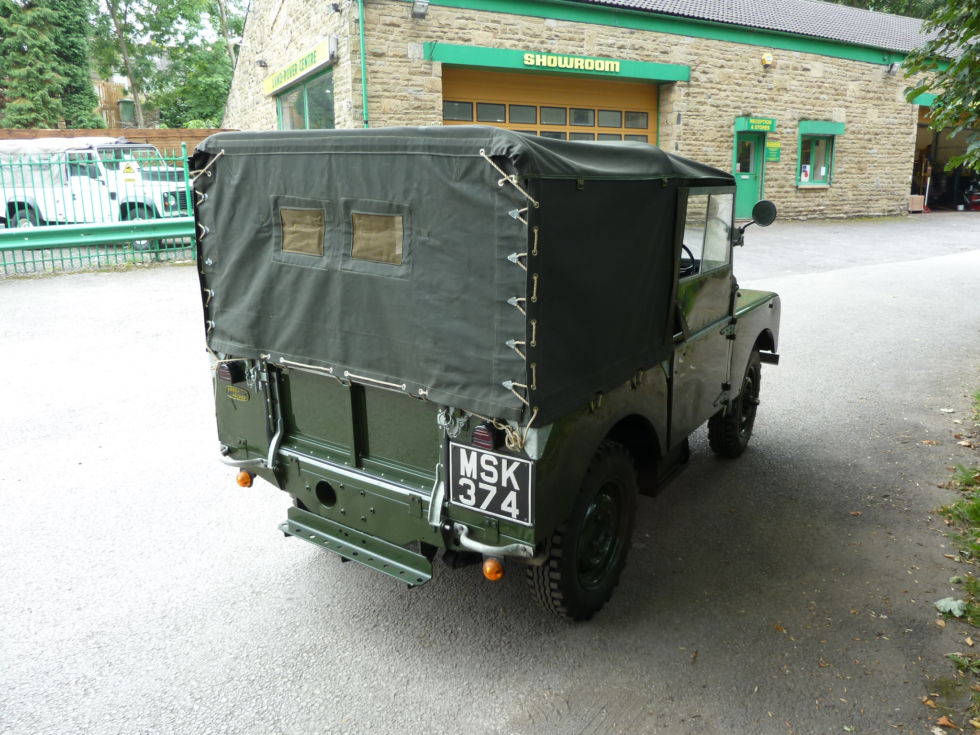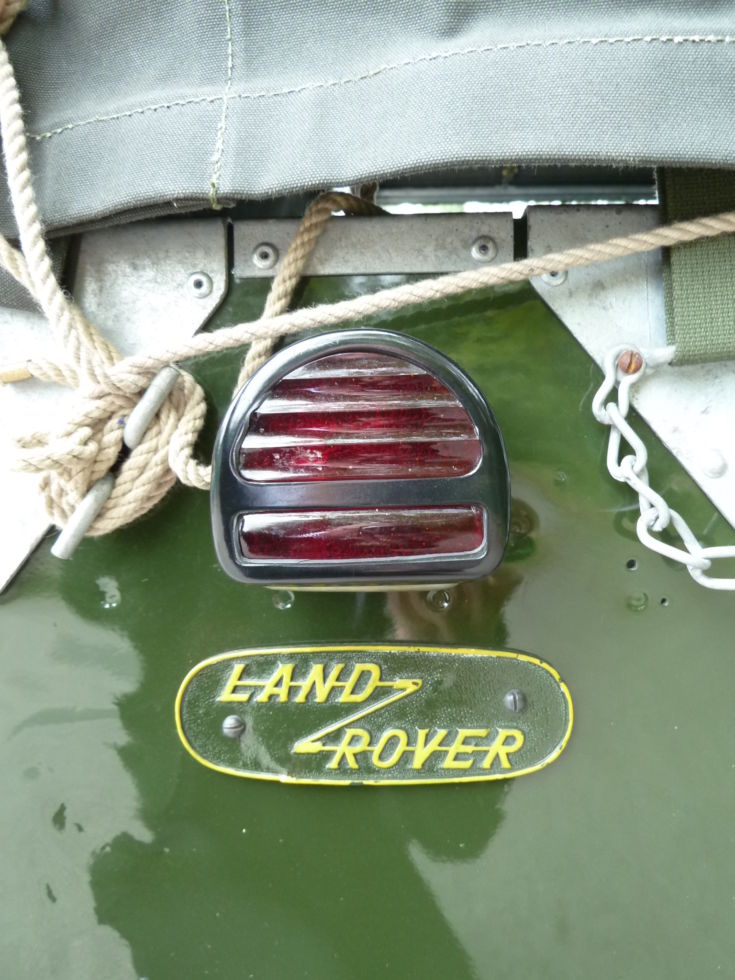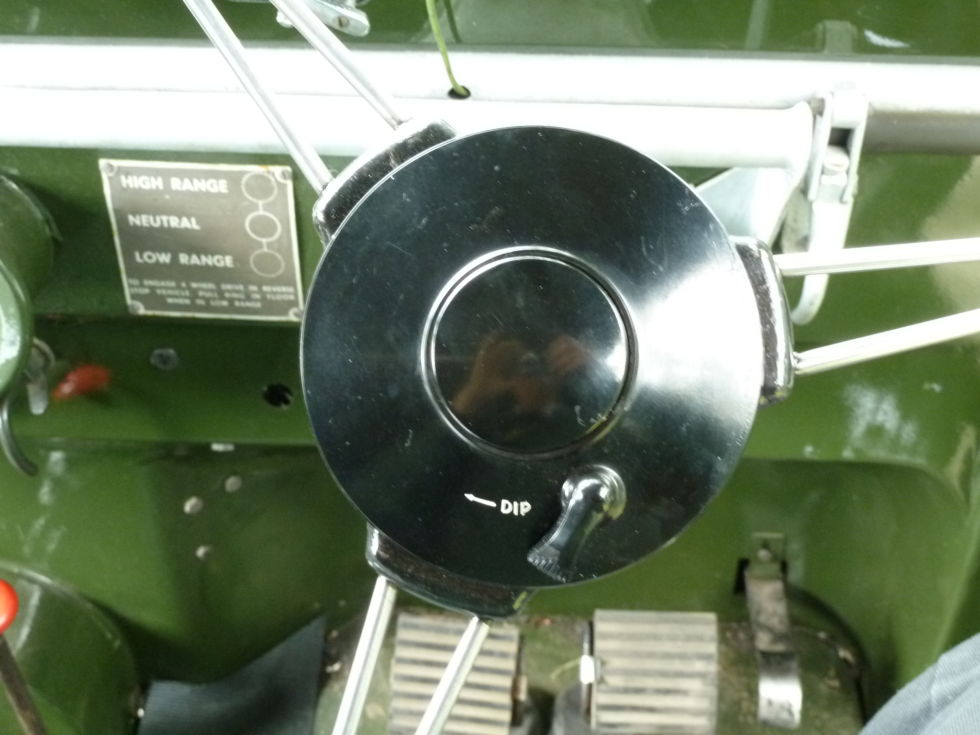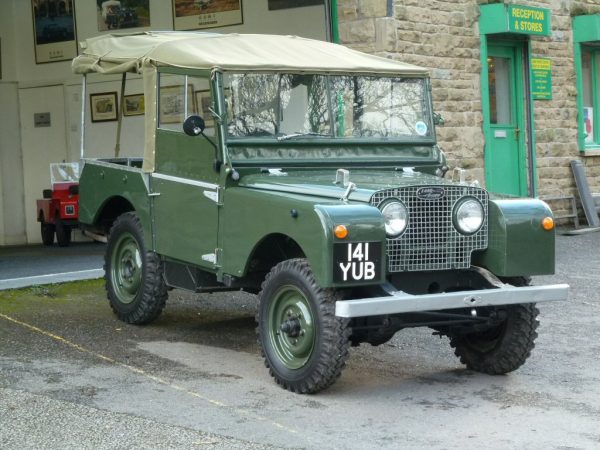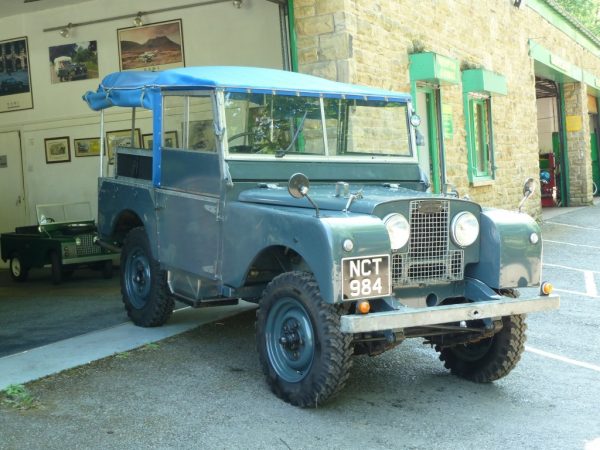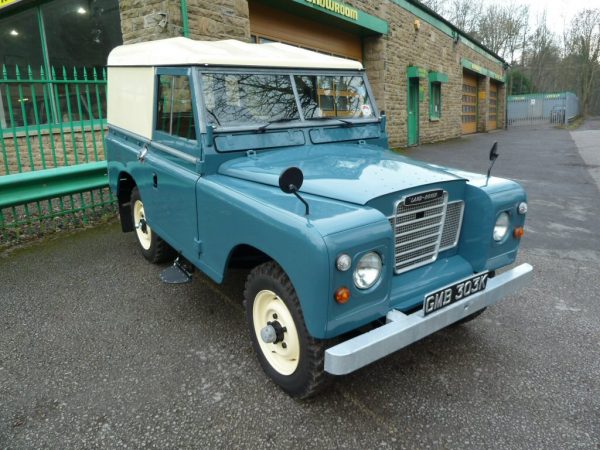Description
MSK 374 – 1949 Land Rover Series 1 – Lights behind grill – ring pull gearbox
The Land Rover was conceived by the Rover Company in 1947 during the aftermath of World War II. Before the war Rover had produced luxury cars which were not in demand in the immediate post-war period and raw materials were strictly rationed to those companies building construction or industrial equipment, or products that could be widely exported to earn crucial foreign exchange for the country. Also, Rover’s original factory in Coventry had been bombed during the war, forcing the company to move into a huge “shadow factory” built just before the war in Solihull near Birmingham, previously used to construct Bristol Hercules aircraft engines. This factory was now empty but starting car production there from scratch would not be financially viable. Plans for a small, economical car known as the M Type were drawn up, and a few prototypes made, but would be too expensive to produce.
Maurice Wilks, Rover’s chief designer came up with a plan to produce a light agricultural and utility vehicle, of a similar concept to the Willys Jeep used in the war, but with an emphasis on agricultural use. He was possibly inspired by the Standard Motor Company, who faced similar problems and were producing the highly successful Ferguson TE20 tractor in their shadow factory in Coventry. More likely, he used his own experience of using an army-surplus Jeep on his farm in Anglesey, North Wales. His design added a power take-off (PTO) feature since there was a gap in the market between jeeps and tractors (which offered the feature but were less flexible as transport). The original Land Rover concept (a cross between a light truck and a tractor) is similar to the Unimog, which was developed in Germany during this period.
Land Rover entered production in 1948 with what has later been termed the Series I. This was launched at the Amsterdam Motor Show. It was designed for farm and light industrial use, with a steel box-section chassis and an aluminium body.
Originally the Land Rover was a single model offering, which from 1948 until 1951 used an 80-inch (2.03 m) wheelbase and a 1.6-litre petrol engine producing around 50 bhp (37 kW; 51 PS). The four-speed gearbox from the Rover P3 was used, with a new two-speed transfer box. This incorporated an unusual four-wheel-drive system, with a freewheel unit (as used on several Rover cars of the time). This disengaged the front axle from the manual transmission on the overrun, allowing a form of permanent 4WD. A ring-pull mechanism in the driver’s footwell allowed the freewheel to be locked to provide more traditional 4WD.
MSK 374 is from the very first year of production (1949) – first registered 27th August
It retains all of it’s original features such as
- 1600 petrol engine,
- ring pull gearbox,
- dip switch on the centre of the steering wheel
- metal spoke steering wheel
- Single wiper motor
- Spade back seats
- Rear “D” lamps
It is also fitted with correct period 6.00 x 16 Avon Traction mileage tyres, original tow plate a lovely capstan winch, and has had indicators added for safety.
It presents very well in Deep bronze Green with Khaki hood. The bodywork is extremely straight and it is a real pleasure to drive and would make a great addition to anybody’s classic car collection, or to simply “potter”
Recently returned from taking part in a local launch party for the new Defender.
Also has the advantage of cheap classic car insurance as well as being Road Tax and MOT exempt
What’s not to like !!

